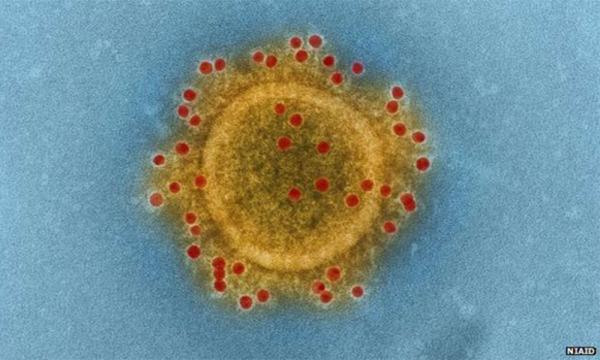Here are some key features of coronaviruses and what we know about the new virus that was identified in the central Chinese city of Wuhan.
- Coronaviruses are a family of viruses that get their name from what they look like under a microscope - they are spherical and their surfaces are covered with “crown”-like spikes.
- Coronavirus infections can lead to respiratory illnesses - some of which can be severe and deadly, such as Middle East Respiratory Syndrome (MERS) and Severe Acute Respiratory Syndrome (SARS), and some of which can be much milder, such as the common cold.
- Coronavirus infections have a wide range of symptoms, including fever, coughing, shortness of breath and breathing difficulties. Severe cases can cause pneumonia, severe acute respiratory syndrome, kidney failure and death.
- Coronaviruses are transmitted between animals and people and can evolve into strains not previously identified in humans.
- Preliminary research has suggested that the Wuhan coronavirus may have made the jump into humans from snakes. But Chinese government medical experts have also suggested badgers and rats as possible sources.
- The previously unknown strain is believed to have emerged late last year from illegally traded wildlife at an animal market in Wuhan.
- Like other coronaviruses, the new China virus is being transmitted from person-to-person via droplets when an infected person coughs or sneezes. It can also spread via contaminated surfaces such as door handles or railings.
- Like the viruses that cause MERS and SARS, the new China virus is an RNA virus, which means it has RNA rather than DNA as its genetic material. This means the virus blends with its host’s DNA, and also means it can mutate rapidly.
- China says the virus is mutating and that there is evidence of respiratory transmission.
- Testing for the new China virus involves using a real-time polymerase chain reaction (RT-PCR), which identifies the viral RNA in a sample. These could be from a throat swab, a cough sample, or a blood sample if the patient is very ill.
- Thailand has reported four cases, Japan and Vietnam two apiece, and South Korea, Taiwan, Singapore and the United States one each. A second possible case was being tested in the United States and the BBC reported five people being tested in Scotland. Patients in these cases were either residents of Wuhan or recent visitors to the city.
- Those most affected are older people and those with underlying health conditions.
- The World Health Organization (WHO) said on Thursday that while the outbreak was an emergency for China and the agency was tracking the evolution ‘every minute’, it was not yet a global health emergency.
- Three research teams are to start work on developing potential vaccines, the Coalition for Epidemic Preparedness Innovations said. The plan is to have at least one potential vaccine in clinical trials by June.
- Wuhan, a city of 11 million people, is on lockdown, with urban transport shut and outgoing flights suspended.
- Nearby Huanggang, a city of 7 million people, is suspending public transport and closing public venues, including movie theatres and internet cafes.
- Beijing closed tourist access to the Forbidden City and cancelled large gatherings, including two Lunar New Year temple fairs.
- Airports around the world have stepped up screening of passengers who have travelled to China.
- Equities markets around the world fell on Thursday, led by the biggest decline in Chinese stocks in more than eight months, as concern mounted about the spread of the virus.
- Reuters


